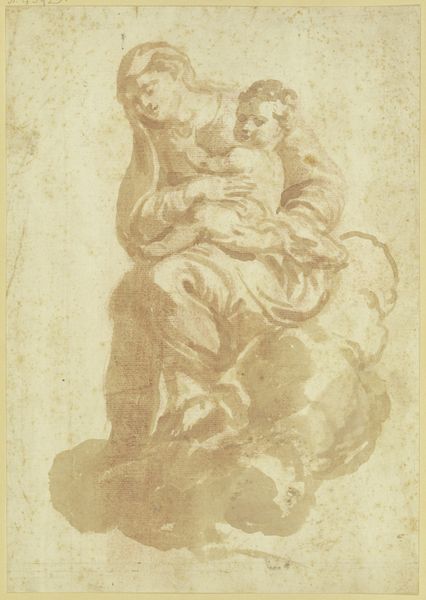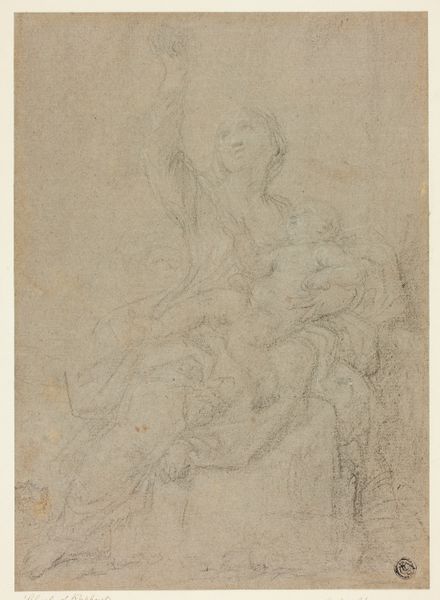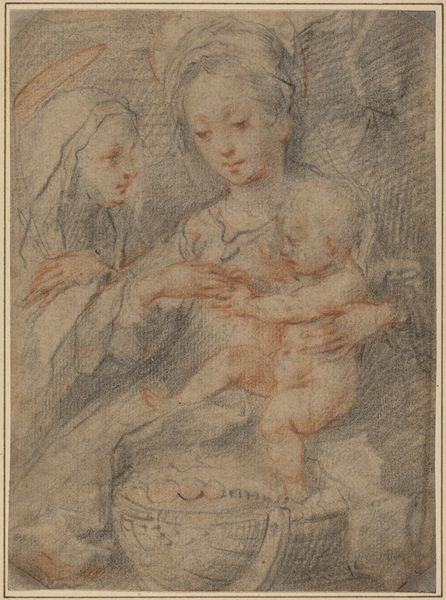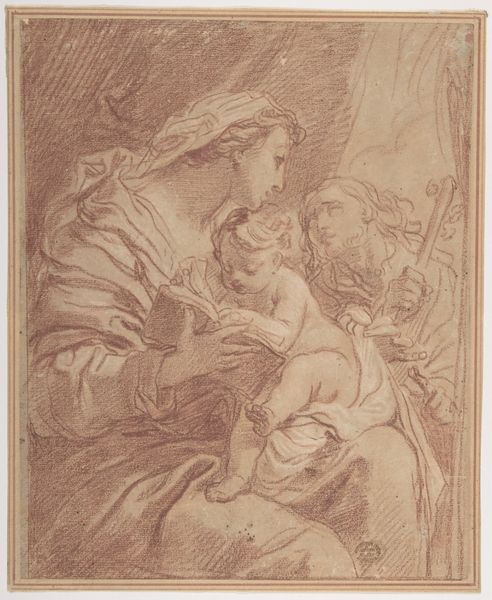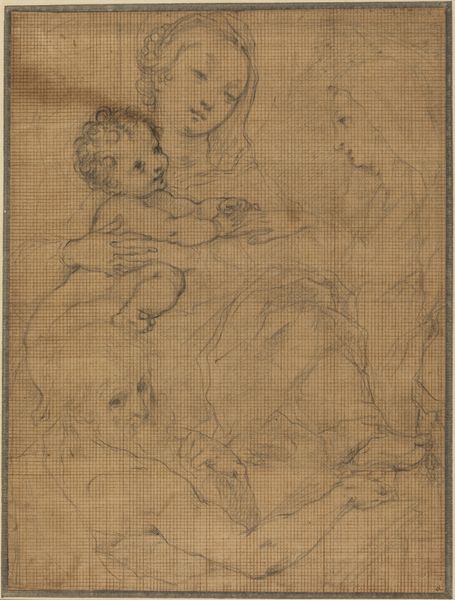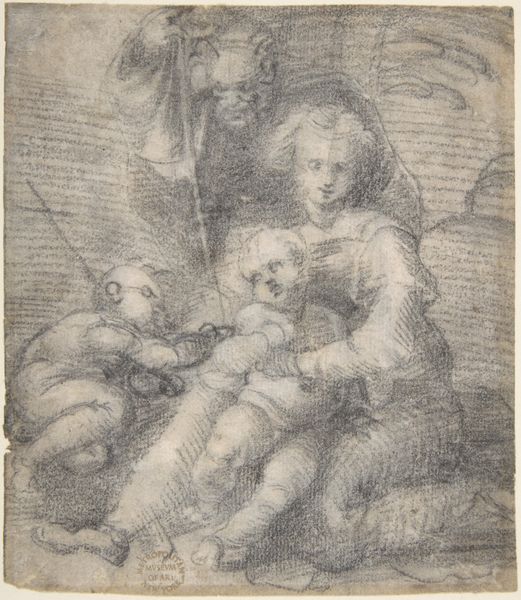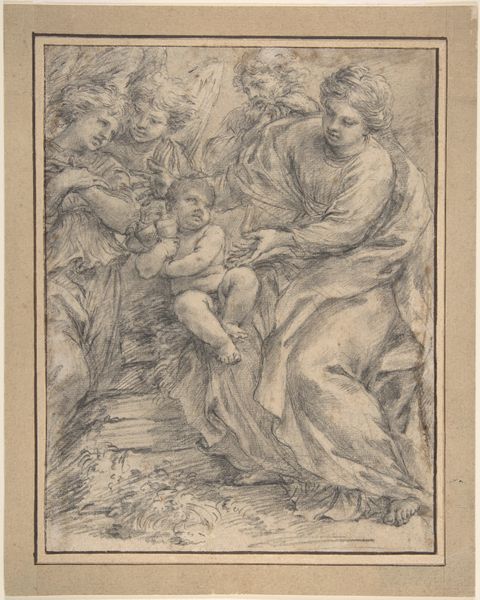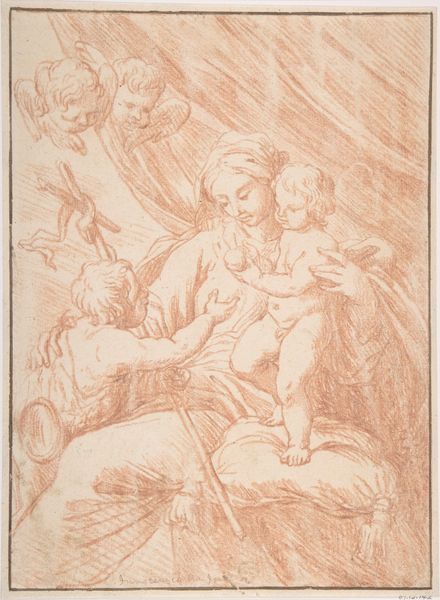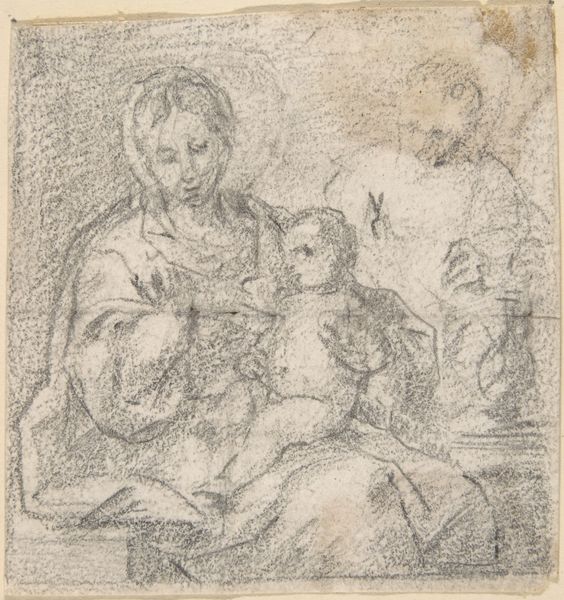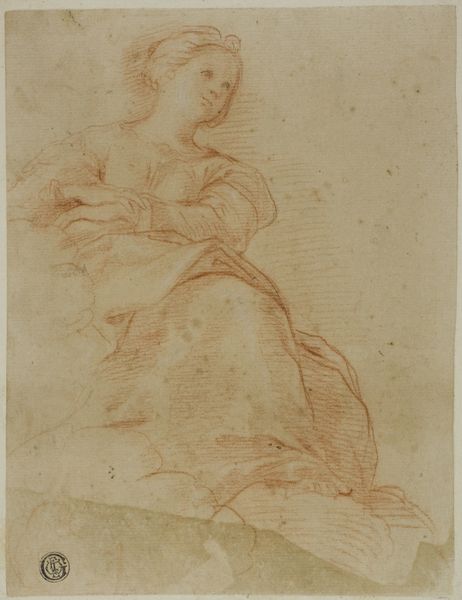
drawing, print, pencil
#
portrait
#
pencil drawn
#
drawing
# print
#
figuration
#
pencil drawing
#
pencil
#
academic-art
#
italian-renaissance
Dimensions: 5-5/8 x 4-9/16 in. (14.3 x 11.6 cm)
Copyright: Public Domain
Curator: Here we have Fra Bartolomeo’s drawing, "The Virgin and Child," created sometime between 1510 and 1520. It's a pencil drawing and print. What's your initial take on this piece? Editor: It’s quite arresting, actually. The muted tones lend an ethereal quality to the scene. The figures almost seem to emerge from the paper, carrying a weight of centuries within them. The almost tangible charcoal strokes are the focal point here. Curator: Absolutely. Let’s delve into those material aspects. The choice of pencil as the medium, during the Renaissance, suggests its function as a preparatory sketch. Bartolomeo likely utilized this drawing as a study for a larger painting, enabling him to meticulously plan the composition and the arrangement of figures before committing to the final artwork. It offers a raw insight into his artistic process, stripping away the layers of the completed piece to reveal its foundational structure. Editor: That’s a very interesting point about it being preparatory. Viewing it from a socio-historical perspective, the image also speaks volumes about the period’s dominant cultural narratives. Motherhood, the Virgin Mary— these were central, powerful symbols of idealized womanhood and religious devotion. This drawing participates in and perpetuates those values. Who gets to represent this motherhood ideal and how they are represented becomes an extremely politically loaded set of decisions. Curator: Agreed, the image itself reinforces particular ideals, but also consider Bartolomeo's role within the socio-economic structure of art production. He was running a workshop with assistants who were contributing to pieces such as this, raising questions about artistic labor and authorship during the Renaissance. Were these drawings strictly the master's hand, or a product of collective effort within his workshop? It makes you think about art's economic structure back then. Editor: Right, the layers of contribution in producing this artwork are hard to separate fully now. Shifting to another dimension: the soft lines impart a great gentleness. It speaks of vulnerability but there’s this unmistakable serene and self-contained strength. I think, maybe in spite of any conscious intention, Fra Bartolomeo has inadvertently depicted Mary not only as the compassionate Mother of God, but perhaps more subtly, and perhaps even more powerfully, as a figure of endurance, resistance and determination. Curator: That reading is indeed plausible given what we see rendered through such modest materials. So by examining the tangible components, along with considering artistic process, it's surprising to come face-to-face with all this latent symbolic power that remains palpable centuries later. Editor: It’s a reminder of how artworks can echo far beyond their own historical context.
Comments
No comments
Be the first to comment and join the conversation on the ultimate creative platform.
